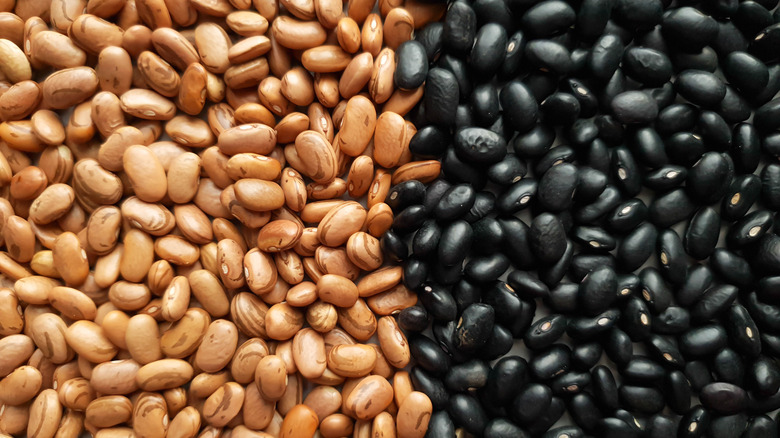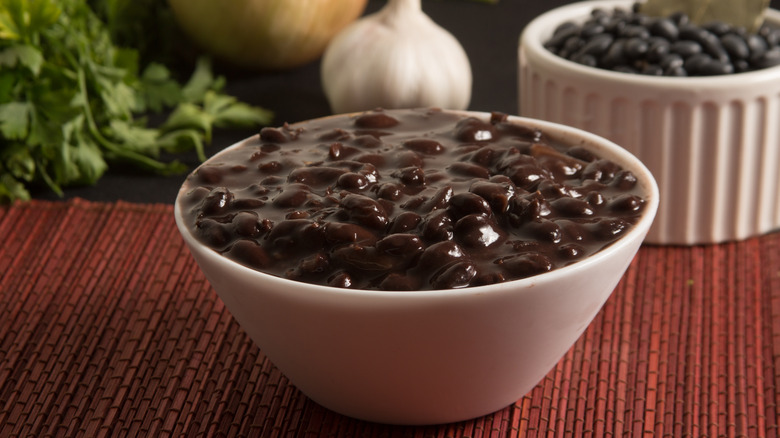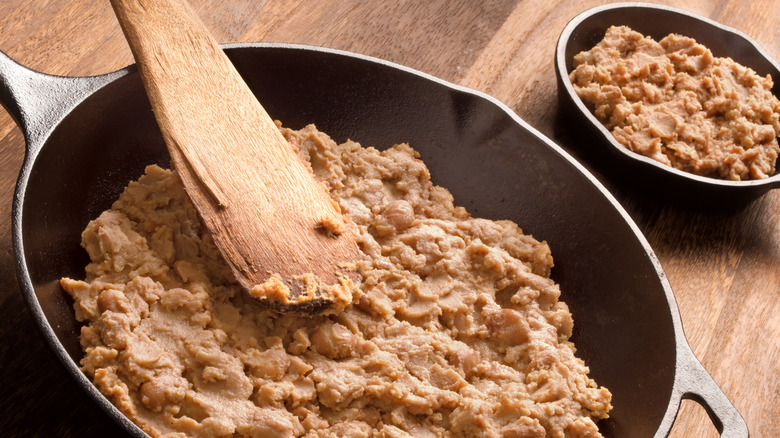The Main Differences Between Pinto Vs Black Beans
You've probably been asked to choose between black and pinto beans whenever you're at your favorite Latin American-style chain restaurant. You might've wondered what the difference between these legumes are at the moment of ordering and, in a panic or by habit, made your selection. The truth is, there are several characteristics that distinguish black beans from pinto beans — mainly their flavor, color, and application.
Beans are a powerhouse of nutrients and, if eaten regularly, might contribute to a longer life expectancy. Best of all, it doesn't matter whether they're black or pinto. They're full of nutrients and fiber that can reduce LDL cholesterol. So whether you make a batch of easy Mexican pinto beans or season up a can of black beans, make sure you're eating them on the regular. Albeit, the only real similarity between black and pinto beans is their nutritional profile (and anti-nutrient profile, but more on that later).
Beans, beans, the magical fruit
Dried lack beans have a deep, rich black (almost indigo) color and turn a rich brown hue when cooked. This color is important because it's indicative of the antioxidant fireball these little beans are. Nutrient-dense black beans have been shown to reduce the risk of heart disease and Type 2 diabetes. Their high fiber content can help control blood glucose levels and lower overall cholesterol levels. Black beans are so high in fiber that a cup of them provides 60% of your daily requirement.
These beans are hearty and don't break down as easily as some other pulses. It makes them ideal for soups and stews because they can cook for a long time and not lose their structure. Black beans are a cheap source of plant-based protein, and their versatility make them a staple in vegetarian and vegan cuisine. It's splitting hairs, but black beans as it turns out, are slightly more nutrient dense than pinto beans. Black beans contain an overall higher amount of minerals and vitamins than pintos per serving.
Refried glory
You might recognize pinto beans as the kind used in refried beans. They're a standard in a lot of Southwestern American dishes, such as quesadillas and burritos. These beans are not boldly flavored, so they slot right into many kinds of dishes and will basically become paste when cooked long enough, making them excellent for dips. Pinto beans have a higher fat content than black beans (and are slightly higher in caloric value) but still boast similar nutritional benefits.
Pinto beans and black beans both contain what are referred to as anti-nutrients. The only real drawback of beans is that they do contain tannins and phytic acid. Both black and pinto beans are high in iron, but their anti-nutrient content can inhibit the absorption of iron and other minerals inherent to these beans. If you're worried about this, remember that cooking your beans thoroughly decreases the presence of anti-nutrients (pinto beans do require a slightly longer cook time than black beans). The bottom line is both legumes are great and should be enjoyed often. So the next time you're faced with having to choose between black beans and pinto beans, know that there is no wrong answer.


